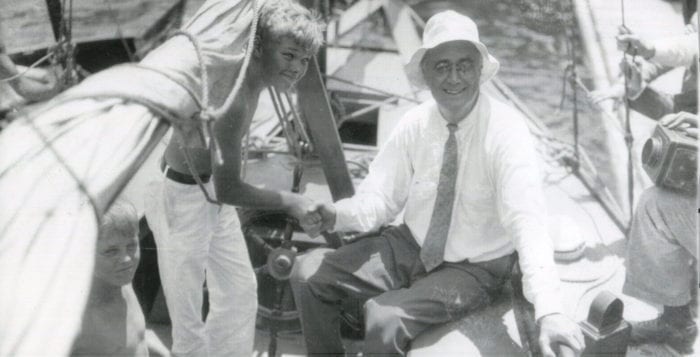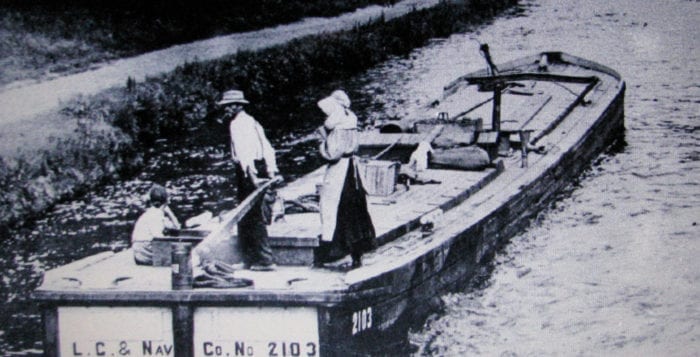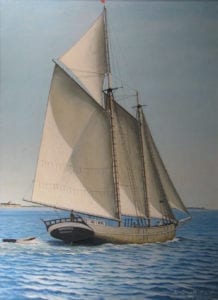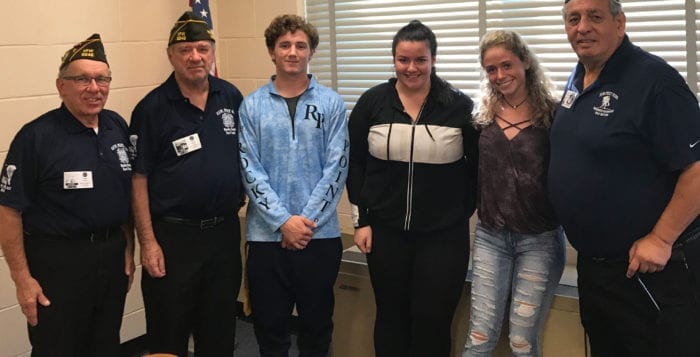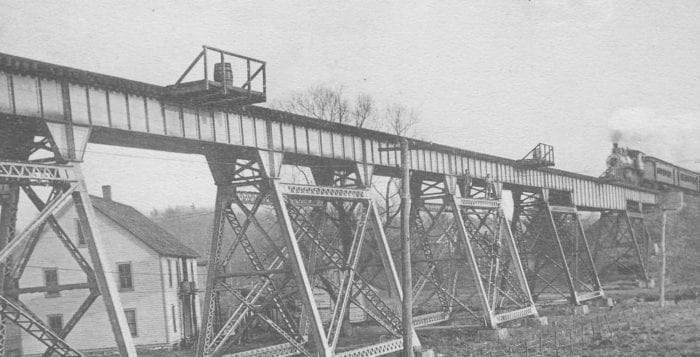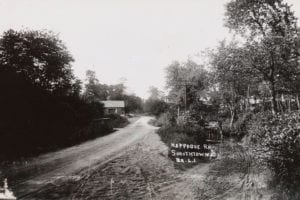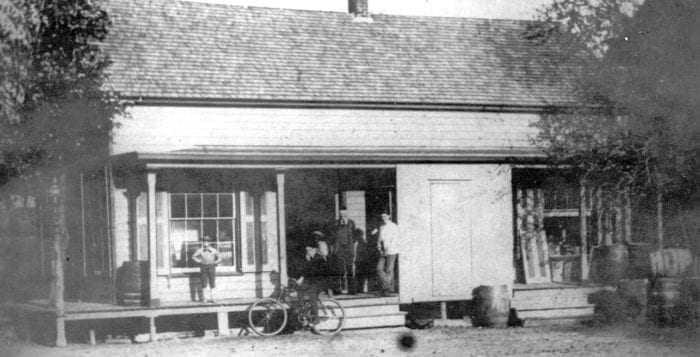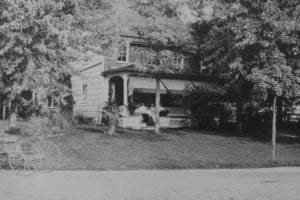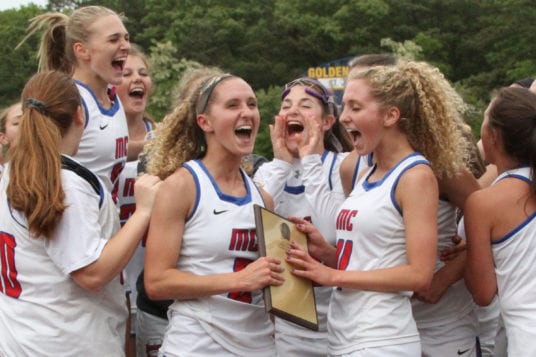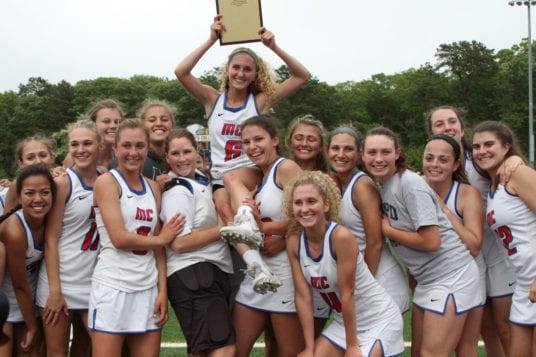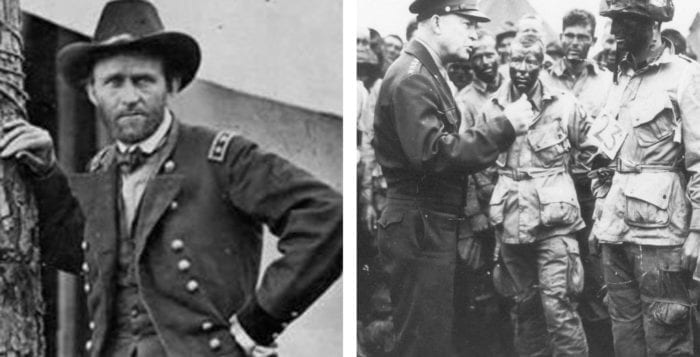They say a picture is worth a thousand words, but in one case, a picture is worth almost 100 years of history.
On Dec. 8, 1941, 76 years ago to the day, then president of the United States, Franklin Delano Roosevelt, delivered his “day which will live in infamy” speech during a joint session of Congress in response to Japan’s attack on the U.S. naval base at Pearl Harbor, Hawaii Dec. 7. The address served as the precursor to the U.S. finally joining World War II and taking up the fight against the Axis powers. He went on to serve as president until his death in 1945, preventing him from completing his fourth term in office, a feat in itself, as no other American president has served more than two terms.
In the summer of 1932 just before his first presidential campaign, Roosevelt, an avid sailor, made a recreational stop in Port Jefferson Harbor.
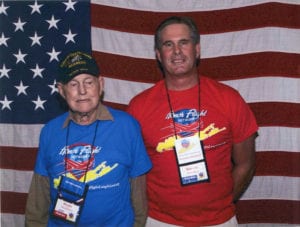
At the time, Roosevelt was the governor of New York and the Democratic Party nominee for the general presidential election that fall. He defeated incumbent President Herbert Hoover to win the highest office in the land in November 1932. During the visit, Roosevelt took a photo aboard a sailboat with two youngsters from Port Jeff, one of whom is still alive residing in the village.
Randall Woodard was born Sept. 3, 1920, in his home on Prospect Street. His family has deep roots in Port Jefferson, though his ancestors can be traced back even further to Southold in 1664.
“I wasn’t there that day,” Woodard quipped during a November visit to the Times Beacon Record News Media office in Setauket, accompanied by his youngest son, Warren, and Richard Olson, a longtime Port Jefferson School District history teacher who has since retired.
Woodard’s father Grover was the school district manager in Port Jeff, and actually hired Earl L. Vandermeulen, who the high school was eventually named after. His wife Barbara worked in the elementary school under Edna Louise Spear, the eventual namesake of the same school. Though he said he didn’t meet any other presidents in his life, Woodard met Albert Einstein once, and his grandmother heard Abraham Lincoln give a speech in New York. Woodard went on to have two sons and a daughter, who were all raised in Port Jeff in a house on the corner of High Street and Myrtle Avenue.
The photo of Woodard, his childhood friend Gilbert Kinner and the soon-to-be president of the United States is a cherished possession of the Woodard family. Warren joked there’s a framed copy hanging in every room of his house.
Woodard said on the day he met Roosevelt that he and Kinner were sailing his family’s 12-foot mahogany vessel around Port Jefferson Harbor on a warm summer morning in June or July.
At about 10 a.m., two or three seaplanes landed in the harbor and taxied over to the beach near the east end of the waterfront near the famous Bayles Dock. Woodard, who was 12 years old at the time, said he and Kinner noticed a large crowd gathering near the dock, so they decided to sail over and see what the commotion was all about.
“I think I could take you.”
— Randall Woodard
They approached the black yawl sailing craft tied to the dock with a man wearing a white sun hat seated in the cockpit. Woodard said he still remembers noticing the metal braces on Roosevelt’s legs and a pack of cigarettes on the seat next to him.
“The whole waterfront of Port Jeff was people,” Woodard said. Roosevelt was waiting for his four sons, who were running late, to arrive to begin a vacation cruise.
The Democratic National Convention had just selected him as the party’s nominee for the presidential election that fall, and it was too early to begin campaigning. While he waited for his sons to arrive, Roosevelt and the reporters milling in the vicinity suggested the candidate should be in a photo with the two boys. Woodard and Kinner boarded, and “Vote for Roosevelt” hats were placed on their heads to wear in the photo. Woodard recalled that Kinner took the hat off, tossed it in the cockpit and calmly said, “My father is a Republican.”
Woodard said there was an even more memorable interaction from the meeting when Roosevelt asked him, “How does the boat sail?” Young Randall responded, “I think I could take you.”
He referred to the then-governor’s vessel as “badly designed,” with a laugh during the interview. He said eventually Roosevelt and the others took off sailing in the Long Island Sound. Woodard and his friend tried to keep up with Roosevelt for as long as they could until the soon-to-be president was out of sight.
“We kids went to the movies for a week straight just to see ourselves on the Pathé News movies,” Woodard wrote in a 2004 account of the day.
Woodard and his son Warren shared a story about seeing by chance a clip of 12-year-old Randall dancing on Roosevelt’s boat in a documentary about past presidents decades later. Warren said they purchased multiple copies of the documentary on DVD.
“We kids went to the movies for a week straight just to see ourselves on the Pathé News movies.”
— Randall Woodard
Woodard’s life and interests would intersect with Roosevelt’s in other ways later in life. His daughter Tracy was diagnosed with polio in 1949, which also famously afflicted Roosevelt. Woodard’s affinity for boating only grew after 1932, and he eventually went on to serve in the U.S. Navy, where Roosevelt had previously served as the assistant secretary prior to his years as governor.
The Woodards owned several sailboats and fishing boats through the years. In 1936, Randall and his older brothers, twins Martin and Merwin, finished tied for first among 2,000 other competitors worldwide for the Snipe Class International championship. Through the years he often competed in races and experienced more-than-modest levels of success.
After graduating from Port Jefferson High School in 1938, Woodard attended The Citadel military college in South Carolina.
“The war was on the horizon in Europe and a military college made sense at that time,” he wrote in 2004. He joked he and a high school friend went to Citadel because their grades were not good enough to attend the U.S. Naval or Coast Guard academies.
“I was not a hero,” Woodard said. “If we didn’t have a Marine Corps we’d still be over there. I was in enough tight spots to know.”
After graduating from The Citadel with a degree in civil engineering, he became a Seabee officer in the U.S. Naval Construction Battalions. The Seabees, as they were called — a play on “CB” for Construction Battalion — were deployed to Pearl Harbor in the aftermath of the Japanese attack to reconstruct damaged bulkheads, dredge the ocean floor to allow ships passage and assemble barges and causeways in preparation for an amphibious attack, according to Woodard. During his training prior to deployment while stationed in Rhode Island, Woodard was aboard the world’s largest sea tow, which was an experimental floating airfield slated for assembly in Alaska. The airfield was not needed, and broken-up pieces were used during the Normandy Invasion on D-Day.
“The war was on the horizon in Europe and a military college made sense at that time.”
— Randall Woodard
He was part of a mission headed to a series of islands in the Pacific near Japan in May 1944, weeks before the beaches were stormed in Normandy. Nine days after D-Day, aboard a craft carrying four barges Woodard was responsible for overseeing, the U.S. Marine Corps invaded Saipan, a Japanese-held island. Woodard and the Seabees contributed to the mission by using the barges to unload ammunition, gasoline and other supplies.
One day a Japanese Zero aircraft flew low and attacked his flat steel barge with little options in the way of hiding places. He said he pulled out his handgun and fired two rounds at the aircraft, which eventually went down.
“I probably missed, but the plane crashed into the side of a freighter,” he wrote in 2004. He said his barges survived for five weeks until the island was secure. After the victory over Japan, he spent six months at Navy Department Bureau of Yards and Docks in Washington, D.C., where he met Barbara Brown, whom he later married. Woodard said he remained in the Navy reserves for about 15 years.
When he returned home, Woodard worked for years as a civil engineer. In the 1950s he was the resident engineer overseeing a series of contracts to construct the Northern State and Sunken Meadow parkways, and said he was responsible for the construction of all of the parkway overpasses in Nassau and Suffolk counties.
This post was updated Dec. 8 to correct the date of President Franklin Delano Roosevelt’s 1941 speech.

